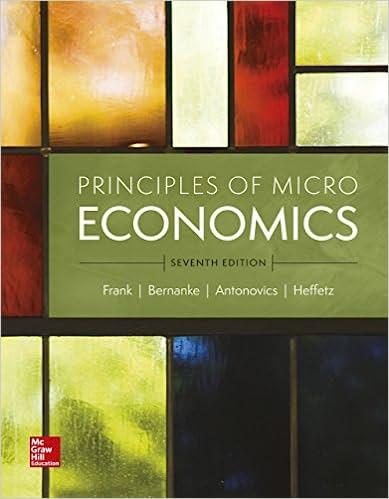Question
Give the summary of the below passage given. Bargaining power of buyers or customers: This has a significant impact on the service sector. The financial
Give the summary of the below passage given.
Bargaining power of buyers or customers: This has a significant impact on the service sector. The financial sector heavily depends on consumer purchasing power. Power varies from person to person. Individual customers, for instance, have little negotiating leverage, particularly in the retail banking sector. This is due to the fact that the loss of a single account has little to no effect on the business's bottom line. Large client groups, however, have more negotiating power because the bank cannot afford to have widespread depositor churn. Due to the potential impact on the bank's profitability of the loss of big accounts and income sources, corporate clients and high-net-worth individuals (HNWI) also have additional negotiating power. By making enticing sign-up offers to prospective customers, BVNM primarily addresses the issue of customer bargaining power. Additionally, it tries to persuade current customers to establish new accounts and sign up for more services, which essentially raises the switching cost for customers by making it more difficult for them to move their money to another bank.
Bargaining power of suppliers: It talks about the impact and impact of suppliers on profitability. A corporation grows more dependent the fewer the suppliers it has. As a result, suppliers are more powerful and have the ability to artificially raise input costs. The switching costs are minimal when there are numerous suppliers.
For instance, the aviation sector is heavily reliant on fuel and planes. Fuel costs are susceptible to changes in the global market. There is hardly much the industry can do to influence these variables. Suppliers of aeroplanes are extremely scarce, giving them negotiating strength. Suppliers' pricing increases may have an industry-wide impact.
Our strategy for dealing with this force is to attempt and draw in more customers while expanding the amount of money that current depositors hold in their accounts and how frequently they use the bank's services. Individual employees have little bargaining power when it comes to labour suppliers unless they are major executive personnel. To retain the finest personnel, We must increase its overall negotiating strength by providing a competitive compensation and benefits package.
The Threat of New Entrants to the industry: New competitors from the finance industry pose only a little danger. It is difficult for a new business to enter the market and attempt to compete on an equal footing with leading corporations. A new rival would actually encounter a number of substantial challenges, including the enormous cash needed, the time needed to build a strong brand name, and the onerous government laws that are applicable to the operation of the banking sector.
Newcomers might not pose much of a threat, but we still need to prepare for some competition from internationally recognised banks. For instance, the business must watch out for significant banks in emerging markets like India that may eventually compete on an international scale.
The Threat of Substitute Products: This task force investigates how simple it is for customers to move from a company's product or service to one offered by a rival. In order to assess whether they can cut their expenses even further, it looks at the number of competitors, how their prices and quality compare to the business under consideration, and how much profit those competitors are making. Both the short- and long-term switching costs, as well as the propensity of consumers to switch, are factors that influence the danger of replacements.
Whether or not alternative items pose a threat to a sector depends on a number of criteria. First, the threat of substitute products is strong if the consumer's switching costs are low, that is, if there is little or nothing preventing the consumer from buying the alternative instead of the industry's product. Second, there is a significant risk of substitutions if the substitute product is less expensive than the industry's product, imposing a cap on the price of the industry's product. Third, the threat of substitutes is significant if the substitute product is of comparable or higher quality than the industry's product. Fourth, if the substitute product's features, qualities, or performance are on par with or better than those of the industry standard.
Any of these scenarios poses a significant danger from substitutes, and Porter's Five Forces predicts lower profit margins. On the other side, a low danger of substitutes exists if the substitute is more expensive, of lesser quality, its functionality is inferior to that of the industry's product, and the consumer's switching costs are significant. Of course, the threat of substitutes is limited if there is no product in the industry that is a near substitute.
Step by Step Solution
There are 3 Steps involved in it
Step: 1

Get Instant Access to Expert-Tailored Solutions
See step-by-step solutions with expert insights and AI powered tools for academic success
Step: 2

Step: 3

Ace Your Homework with AI
Get the answers you need in no time with our AI-driven, step-by-step assistance
Get Started


